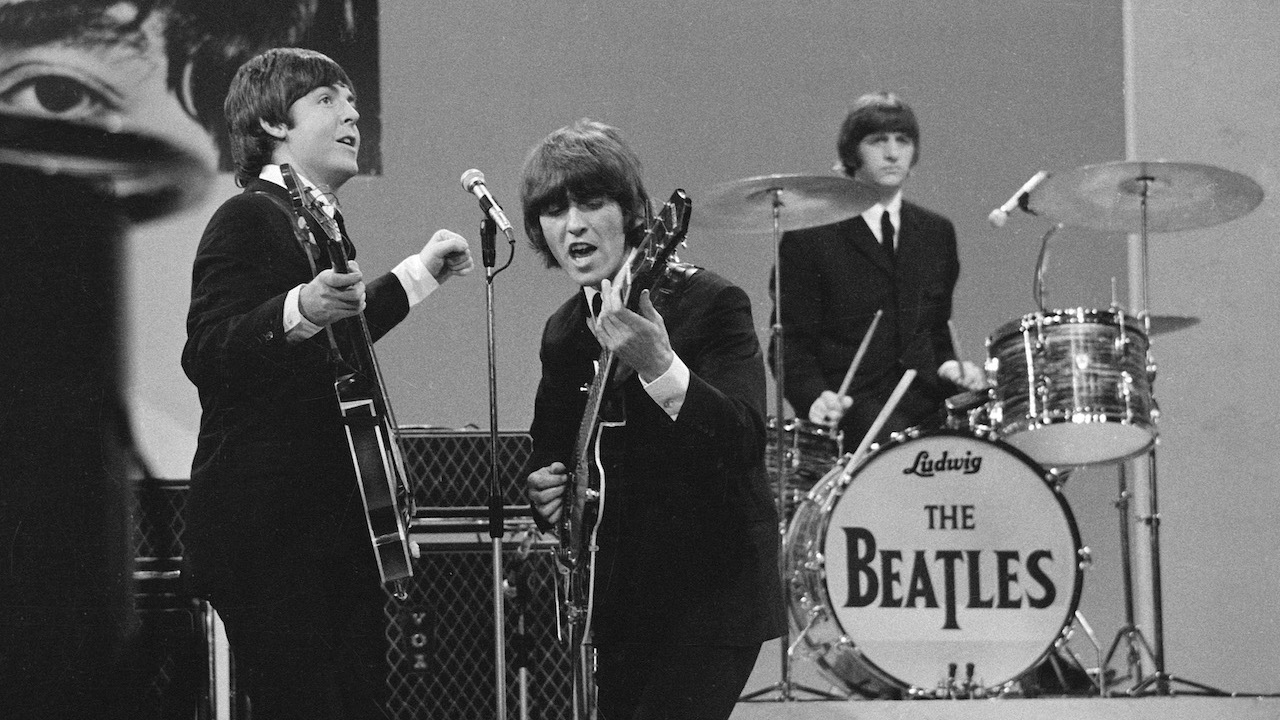“I think Sgt Pepper was a ‘prize period’ when I was playing my best bass”: Paul McCartney’s 10 best basslines with The Beatles
Everyone knows a lot about Paul McCartney, but here are the essentials: born in Liverpool on June 18, 1942, McCartney learned his first instrument about 14 years later – a trumpet bought for him by his dad. He soon moved on to guitar, re-stringing it to be left-handed.
Shortly after the Beatles formed, in 1960, Paul switched to piano, while the band was performing in Hamburg, Germany. In 1961, on a second tour of Hamburg, original bassist Stuart Sutcliffe informed the others that he was leaving to pursue his art career. By default, McCartney inherited the bass guitar chair; he purchased his first Höfner ‘violin bass’ for the equivalent of $45.
Fast-forward as Beatlemania ensued (via his ’63 Hofner and, from Sgt. Pepper onwards, a ’65 Rickenbacker) until John, Paul, George, and Ringo called it quits in 1970. That year, McCartney began a solo career (later forming the band Wings).

What follows are Paul McCartney’s 10 best basslines with The Beatles, which pointed the way forward to a whole new generation of bass players. And remember – he was often singing at the same time!
10. All My Loving (1963)
This bassline is justly famous, a delightful use of the E major scale to tie together the opening chord sequence. McCartney starts on F# on the D string and heads all the way down to the bottom E.
Not only that, he tackles the blues-influenced guitar break with more quarter-note scale figures that often start not quite where you’re expecting them.
9. Day Tripper (1965)
McCartney has always been a very disciplined bass player. This is due to the fact that he approaches the bass as a songwriter.
Listen to the bass during the solo of Day Tripper: he plays a root note throughout, gradually shortening the note values. To appreciate the discipline, pretend Clapton is taking the solo and imagine what Jack Bruce would’ve played underneath it!
8. And Your Bird Can Sing (1966)
One of McCartney’s acknowledged influences was Motown bassist James Jamerson. Jamerson made basslines rhythmically and harmonically more adventurous, especially in his use of syncopation.
The Motown influence is evident here in the anticipated root notes of the bridge, and the chromatic eighth-notes at the end of the verse.
7. Paperback Writer (1966)
Paperback Writer is usually credited as one of the earliest tracks on which McCartney used his new Rickenbacker bass, which had a more cutting sound than the Höfner.
This number only has two chords, but McCartney plays with great invention. It’s another bassline that shows a James Jamerson influence, with syncopation, blues notes and changes of direction.
6. Got To Get You Into My Life (1966)
McCartney’s other acknowledged bass influence is The Beach Boys’ Pet Sounds. This album, which featured the bass playing of Carol Kaye, alerted him to the possibilities of putting notes other than the root in the bass – such as a third or fifth – to create an inversion.
Listen for how at various points in this song the bass acts as a pedal note while the chords change above it.
5. A Day in the Life (1967)
A Day In The Life shows the sensitive invention of McCartney’s bass playing. Each verse has subtle variations, either in rhythm or choice of notes.
Where he really makes his presence felt is in the bridge “Woke up…” section. Apart from the marvellously swinging descending line, listen out for the syncopated fill after “head” and the out-of-breath 16ths on B/A# after “…noticed I was late”.
4. Penny Lane (1967)
Perhaps more of the Brian Wilson influence here, signalled by the quarter-note piano chords. There’s also a wonderful descending bassline on the verse.
Listen out for the inversions on the chorus, where McCartney plays a C# under the A chord and an A under a D (first and second inversions respectively).
3. Lucy In The Sky With Diamonds (1967)
As progressive as anything the quartet ever recorded and stuffed full of creative twists and turns, Lucy in the Sky with Diamonds isn’t all in-your-face bass heroics – McCartney’s a songwriter first and a bass player second, and that’s what we love about him.
In the bridge, he walks through the chords in sixth-beats like no other bass player would; in the chorus he runs up the scale, but deliberately arrives at the word ‘diamonds’ a beat before John sings it.
As McCartney told Bass Player in 1995, “I think Sgt. Pepper was a ‘prize period’ when I was playing my best bass. I could concentrate everything on writing the song, singing harmony with John, and playing the bass – pretty much my role – or maybe playing a bit of piano or guitar or something. Other than that I really didn’t have much to do, so I could put all my energy into that.”
2. Something (1969)
After Yesterday, Something is the most covered song in the Beatles catalogue. The song’s structure is rather simple, but McCartney constantly repackages his bassline.
Look for the different ways he arpeggiates the D and D7 chords, and how he establishes the key change to A before the bridge by outlining an A triad. In the final verse he introduces yet more variations against the Cmaj7/G chord.
1. Come Together (1969)
How do you make a song intro out of a couple of bass hammer-ons, some studio echo and some wooden percussion? Like this. The acquisition of a Rickenbacker in the mid-’60s had helped McCartney to experiment with basslines that used wide arpeggios. These can be heard on songs like Rain and Magical Mystery Tour.
Once this had become part of his tonal awareness on bass, the beautiful figure (spanning an octave plus a minor 3rd from D to F) on Come Together could be written. This song is, perhaps, the pinnacle of his bass playing.


